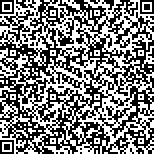下载中心
优秀审稿专家
优秀论文
相关链接
摘要

遥感图像分类是遥感图像处理的一项基本内容,也是遥感应用中关键的一步。为了提高分类的精度,一方面是对光谱信息的合理利用;另一方面,可以加入新的信息源,即进行多源数据处理,并加入地学知识,尤其是对空间信息的利用是至关重要的。但是由于地学知识的复杂性及空间信息利用的难度以及数据源的限制,尚无公认的实用方法。该文提出了一种简单加入空间关系的分类方法,在没有其它数据源的情况下,利用空间关系特性,在分类中构造两个空间关系波段,实现空间约束,部分消除仅依赖光谱数据分类而引起的同物异谱和同谱异物造成的分类错误。简单实用,同时也验证了空间关系在分类中的重要性。
Remote sensing image classification is one of the basic components in remote sensing image processing, which is the key stage in remote sensing applications. There are two ways to get a higher precision: one is to make full use of spectral information, and another is to add other new information The later is called multi-information processing. Spatial information is one of the most important information in these kinds of multi-information. Since lack of information is always the key problem in remote sensing image processing, we propose a spatial information based method to cope with this problem. What we used is not the spatial data but the spatial characteristics. The main advantage of our method is that it can work without any other data sources. We take advantage of spatial autocorrelation law, which is the first law of geography. The law is widely used in geo-analyses. It denotes that the closer in spatial, the similar the objects or phenomenon is. Two spatial bands are constructed based on spatial autocorrelation law and a spatial classification result is produced. These two additional bands containing spatial location information are used in classification. One real class may be divided into many classes that are not similar in space. But every class has similar spectral and spatial characteristics. Based on the classification results, further processing should be done. First, we replace every pixel value of every spectral band with the average spectral value of its class. Then a traditional classification method, such as ISODATA method, can be used. With these steps, we get the last classification results. The MAS and ASTER images are used to prove our method. The classification results show that some miss classified ground covers in the general spectrum based classification method are thrown off by our method. In other words, our method is resistant to the problem of having apparent same spectrum but different ground cover. Another distinct advantage of our method is about the removal of salt and pepper noise from images. It may be also helpful in other research area, such as landscape research. Our method also proves the importance of spatial information in remote sensing image classification. It gives an easy way to add spatial constraint to classification process. The new classification method reveals its simpleness and practicality.

